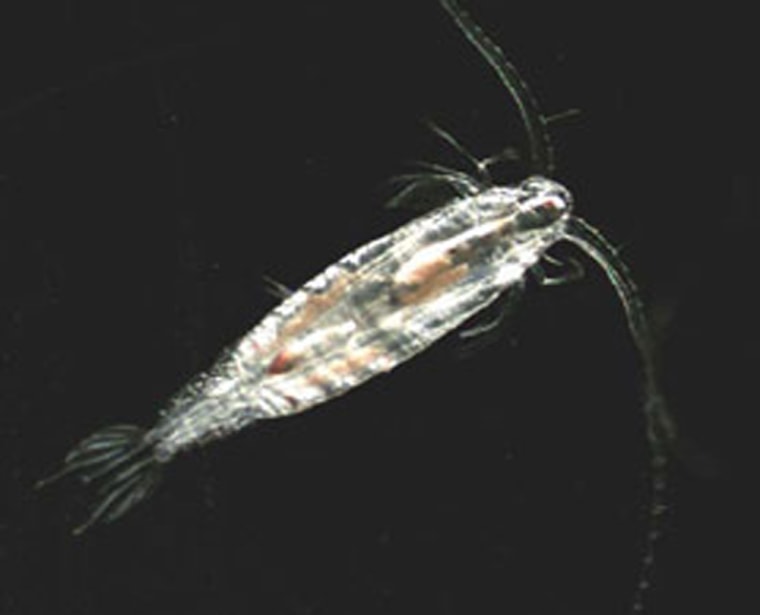Copepods are the world's best animal jumpers, suggests a new study that determined these tiny crustaceans jump with greater muscle power than kangaroos, frogs and all other impressive animal leapers.
Mackerel, herring, jellyfish and countless underwater predators feed on copepods. To avoid becoming dinner, the one- to two-millimeter-long crustaceans can accelerate to a speed of 500 body-lengths per second when they perform an escape jump.
The tiny leg muscles used to execute such leaps are the most forceful in the world relative to their size, according to the study, published in the latest Journal of the Royal Society Interface.
"The trick is that copepods, unlike most other animals, have two different propulsion systems: one for swimming and one for jumping," lead author Thomas Kiorboe told Discovery News.
"The muscles of the two systems are not different in terms of performance, but the gearing of the two lever systems is different, with the jumping system tuned for maximum short-term force production," added Kiorboe, who is a professor in the Oceanography Section at the Technical University of Denmark's National Institute for Aquatic Resources.
He and colleagues Anders Andersen, Vincent Langlois and Hans Jakobsen used a high-speed digital camera with high-resolution and super fast frame rates to study copepods as they jumped.
It doesn't take much to rattle these always-wary, minuscule animals. The scientists got them to jump by tapping on the side of the aquarium where they were housed, or by approaching them with a pipette tip. The copepods would also sometimes just spontaneously jump.
Detailed analysis of the video, followed by mathematical calculations, determined that force production per unit muscle mass during copepod escape jumps is approximately 10 times higher than reported for any other animal.
The researchers think this astounding power is made possible by an optimal design of the swimming legs, copepod musculature and overall body shape.
"The body is torpedo-shaped and is similar among all (copepod) species," Kiorboe said.
Copepods swim by vibrating five sets of feeding appendages located near their mouths. Jumps, on the other hand, are performed using their four to five sets of legs that are sequentially kicked backward, using water as the "substrate." Copepods do not jump off the sea floor or plants, for example.
"Copepods are believed to be the most abundant multicellular animals, not only in the ocean, but on this globe," he added. "We believe that their unusual escape performance is key to their evolutionary success."
Their jumping prowess also enables them to capture their own prey in surprise attacks.
Viscous friction normally creates a thick layer of water surrounding each copepod that would push prey away as the crustacean approaches. "By attacking at high speed, this layer does not have time to evolve," Kiorboe said.
Rhodri Armour, a researcher in the Department of Mechanical Engineering at the University of Bath, has also studied animal and insect jumping.
"In nature, there are two types of jumping: hopping, like a kangaroo, which uses its fine control and direct muscle action to propel it along; and 'pause and leap,' such as in a grasshopper, which stores muscle energy in spring-like elements and rapidly releases it to make the jump," Armour explained.
Copepods jump like kangaroos, using their leg muscles. Insects like grasshoppers and fleas, however, "cheat," according to Kiorboe. "It is a spring force rather than a muscle force that drives the jump," he said, even though the process begins with a certain amount of muscle action.
Scientists such as Armour analyze animal jumping in hopes of duplicating the skill in manmade robots that might be used for applications like space exploration, jumping over obstacles with mechanical ease.
A robot that can leap like a grasshopper has already been built, but no researcher has yet been able to create a device that jumps with the speed and force of a copepod.
